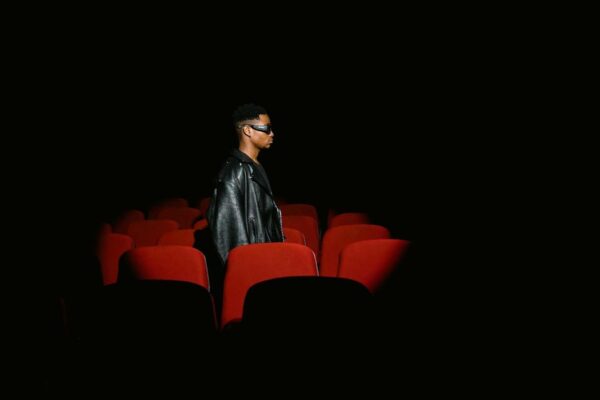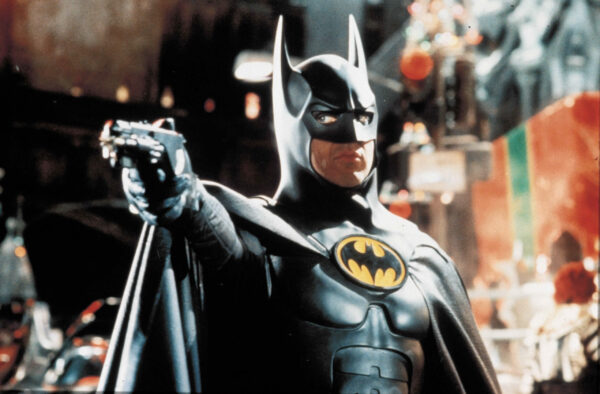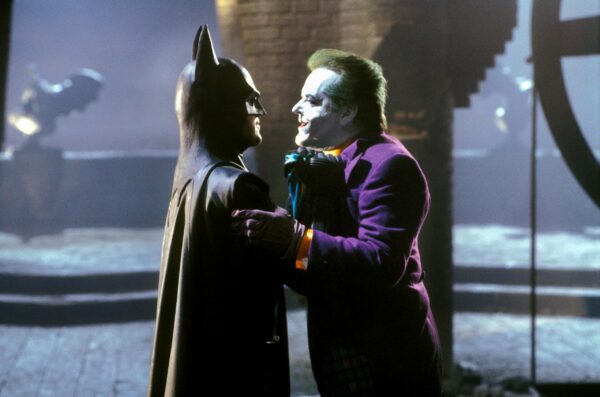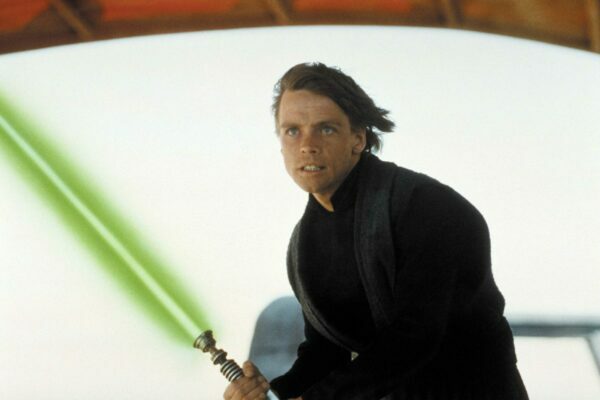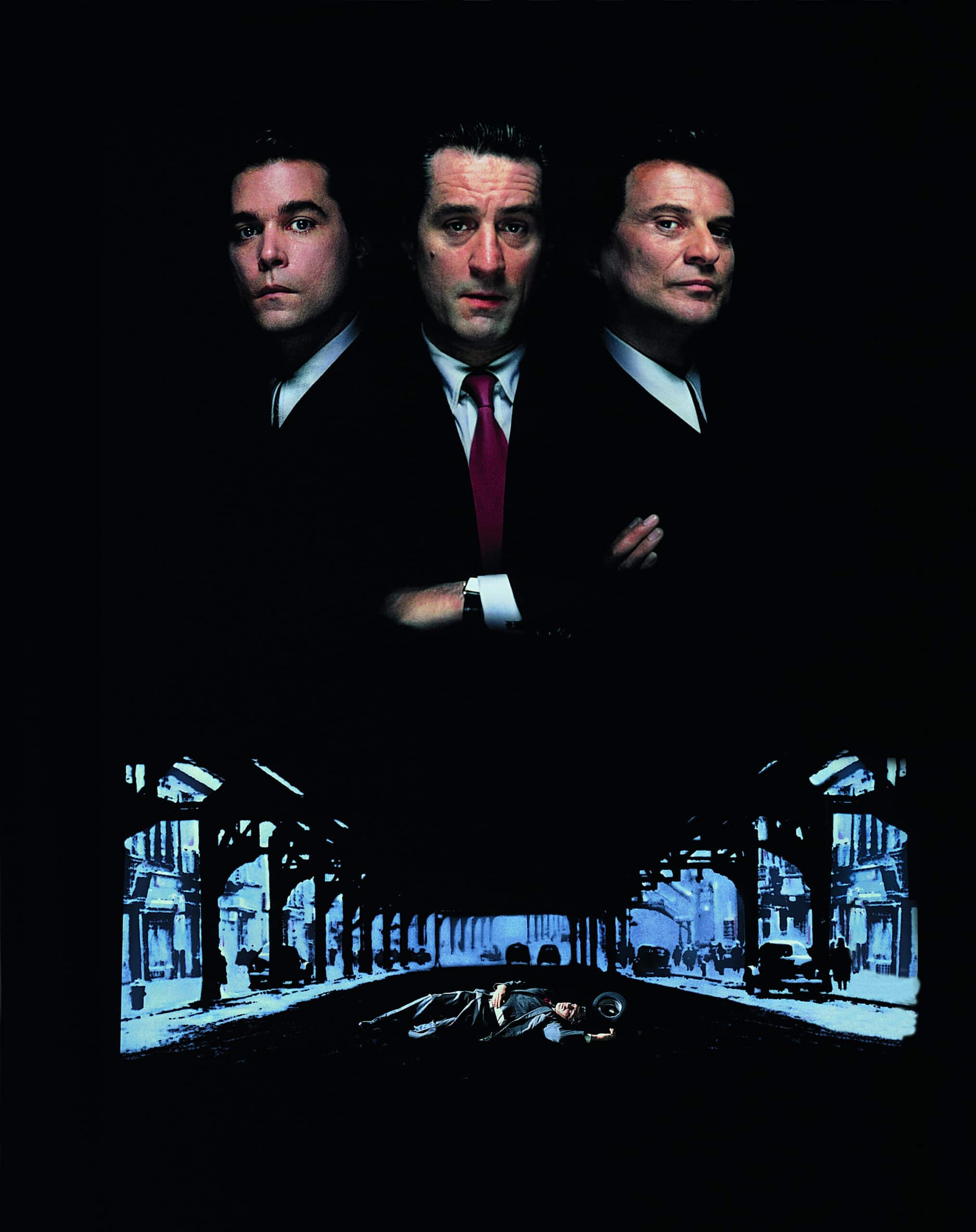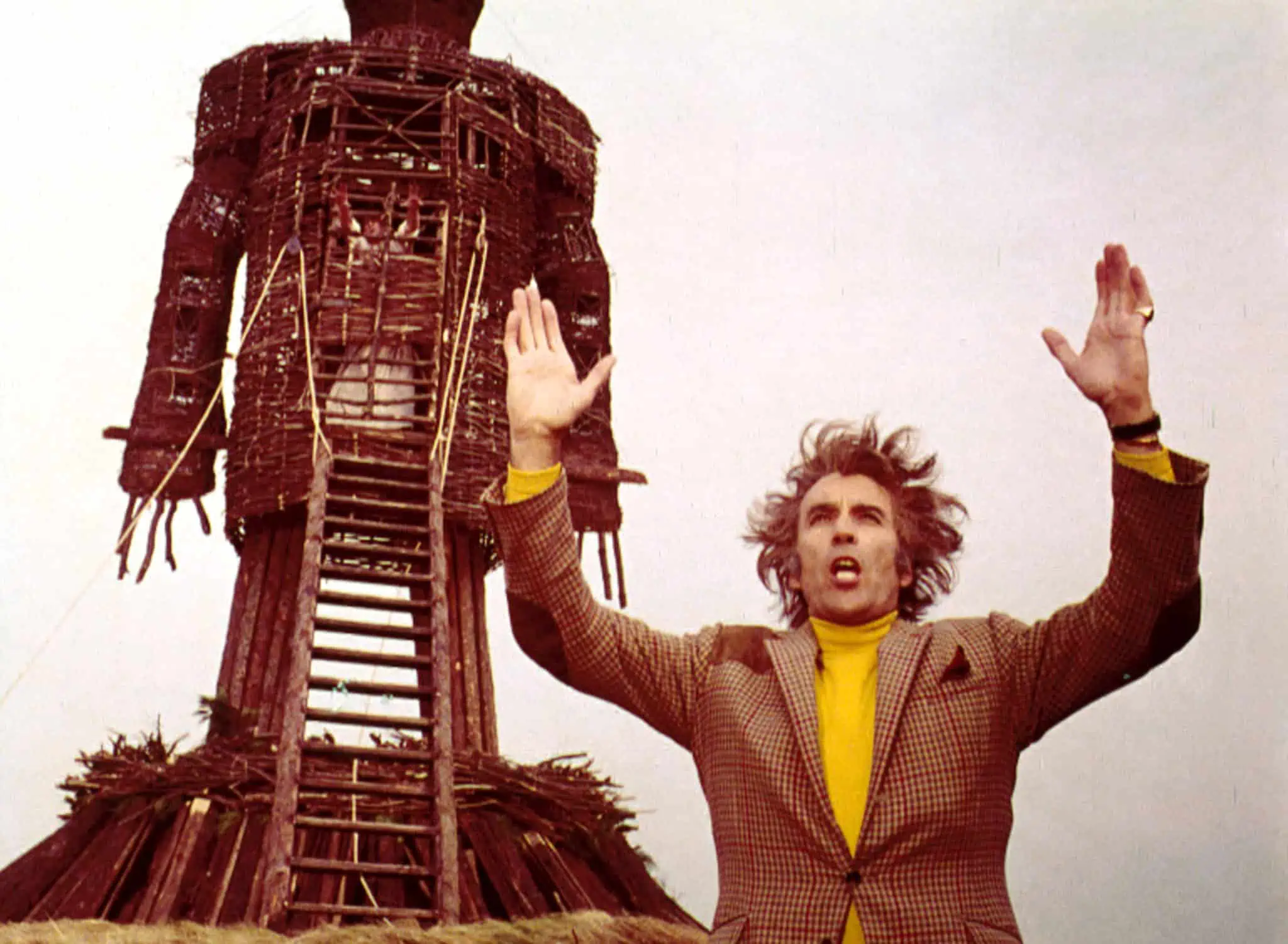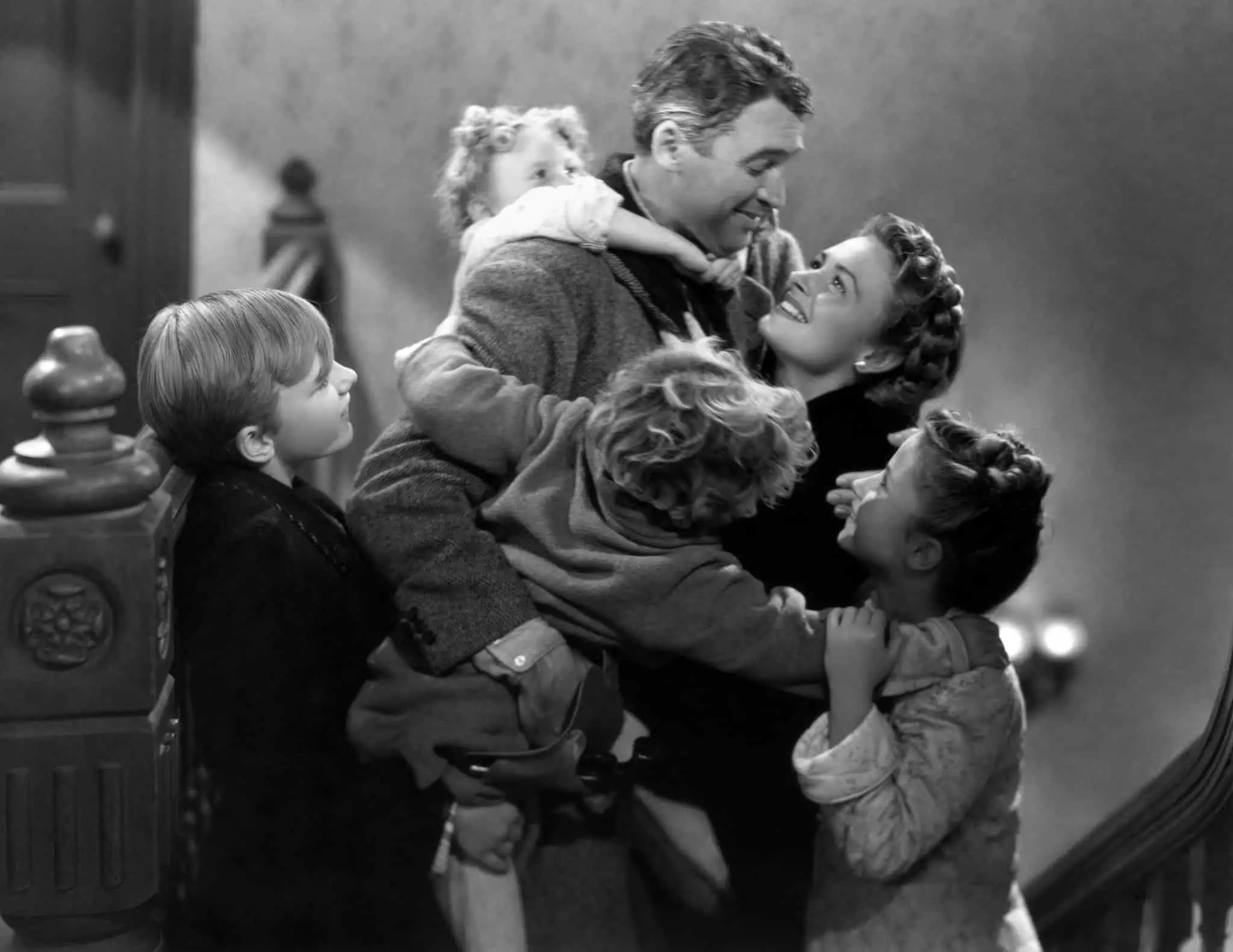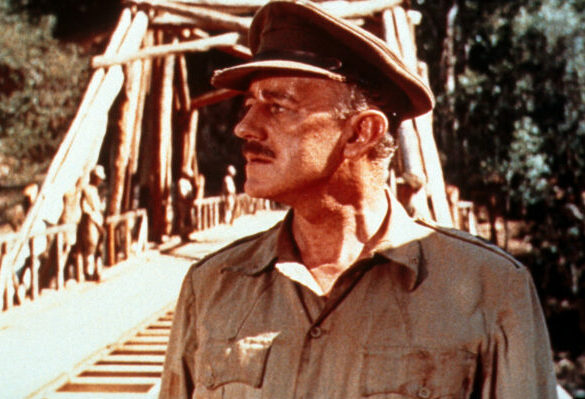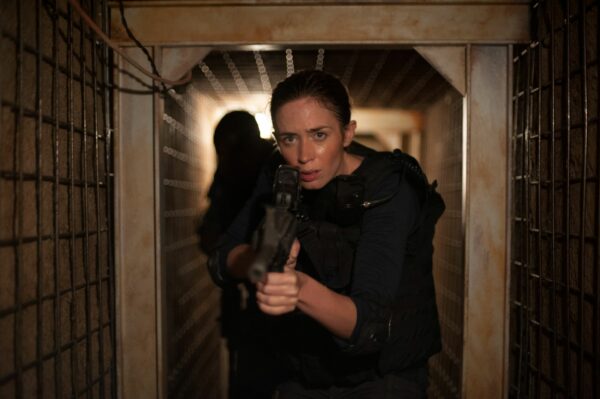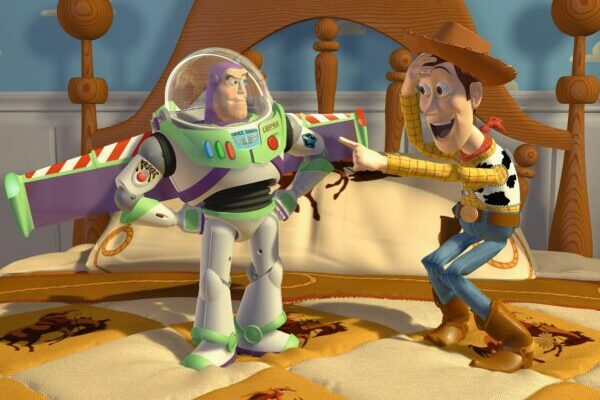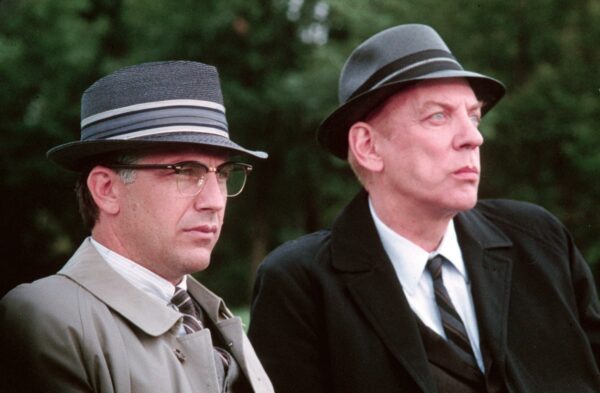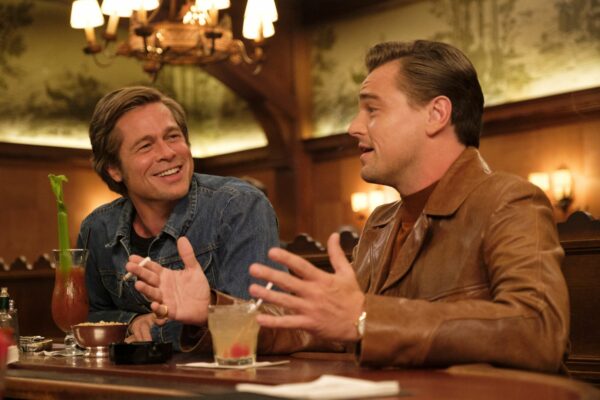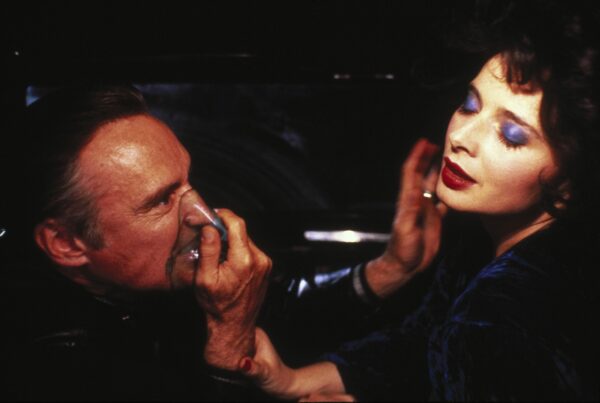
Alien is maybe the definitive science fiction-horror movie. With an influence still seen today, we have the behind the scenes story via 30 fascinating facts.
Ridley Scott’s game-changing classic Alien was released in 1979, launched a wave of imitators, and its effect is still felt to this day.
One of the definitive science fiction-horror films, it follows the crew of the commercial space tug Nostromo, who encounter the eponymous Alien, a deadly extraterrestrial set loose on the ship when a crewmember unwittingly brings it aboard.
By way of 30 fascinating facts, we bring you the lowdown on the iconic movie.
1. The famous title was created by a Hollywood legend
The iconic title that opens the movie was designed by legendary Oscar-winning designer Saul Bass, famous for designing the opening credits and posters for classics like Vertigo (1958), Anatomy Of A Murder (1959) and The Shining (1980). The original idea was to have the title made up of flesh and bone but, when Ridley Scott came on board as director, he thought this was too graphic, and Bass was brought in. Bass remains uncredited in the movie, though.
The opening titles to Alien
2. The egg chamber sequence was originally different
One of the most well-known and acclaimed sequences in the film is the egg chamber sequence. After the Nostromo responds to an alien distress signal and lands on an alien planet, crew members Captain Dallas, Kane and Lambert come across a bizarre spaceship containing a huge chamber full of unhatched eggs.
In the original script, the eggs were found in an ancient pyramid-like structure on the planet. This was written out by the producers, who replaced it with a military bunker. When Scott came in, he liked the ancient civilisation idea, and changed it back. So, what that means is that the chamber with the alien eggs isn’t actually on the alien spaceship – it’s in the ancient structure, and the alien ship is crashed on top of it. And when the crew absail into the chamber, they’re moving from the ship into the structure.
The egg chamber sequence
3. The Space Jockey caused quite a stir
Before Dallas, Kane and Lambert come across the egg chamber, they pass through what looks like the bridge of the alien ship, and find a huge skeletal figure sitting in a chair. The movie provides no explanation, and this figure became known as the Space Jockey. There was a lot of fan speculation down the years about what or who the Space Jockey could be and Ron Cobb – one of the concept artists on the film – did explain. Cobb said:
“A cataclysm caused the alien adults to die, leaving the eggs dormant in the chamber. Years later, the Space Jockey race investigate the planet and are fascinated by this chamber. One of them gets face-hugged, the alien bursts from his chest, and goes on a killing rampage. The alien is shot and killed, and its acidic blood burns through the hull, leaving the Space Jockeys stranded on the planet. They sound out a distress call that, years later, the Nostromo picks up, by which point the Jockeys have starved to death.”
The studio – 20th Century Fox – originally said that Ridley Scott couldn’t build the Space Jockey set because it was so huge, and only being used for one scene. It was Ron Cobb though, who convinced them to keep it. He said, “it’s our Cecil B. DeMille shot,” meaning a moment that makes the movie look expensive and not like a B-movie.
The Nostromo crew come across the mysterious Space Jockey
4. Ridley Scott’s children are in the movie
One of the many things Alien is praised for is the grounded, credible costume design, such as the space suits the crew wear aboard the alien ship. Those suits, though, caused some problems for the cast. They were huge and bulky, and the set was 38 degrees, so the cast would regularly pass out, meaning a nurse had to be on hand at all times. Also, to make the Space Jockey set look as big as possible, Ridley Scott and the DP Derek Vanlint’s children would be shot in the suits and, when they started passing out too, they made modifications to the costume.
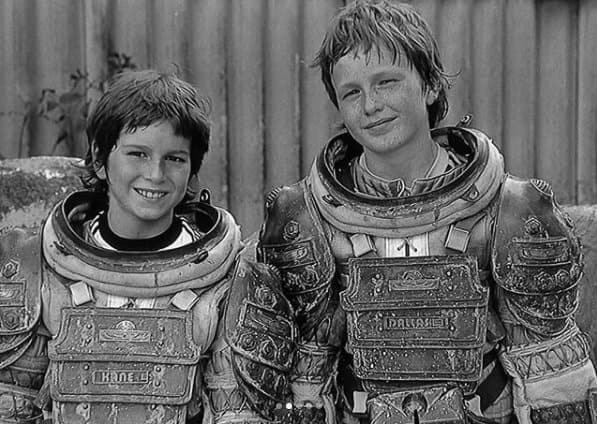
Ridley Scott’s sons – Jake and Luke – in costume
5. The chestburster sequence involved impressive practical effects
Probably the most famous scene in the film is the moment that, having been impregnated by a facehugger, an alien burts through Kane’s chest at dinner. In order to acclompish this, the crew created a mechanical torso, laid it out on the table, and John Hurt (who played Kane) lay under the table with his head, shoulders and arms protruding through a hole in the table to make it all seem like one body. The mechanical torso was packed with animal guts, and a small compressed air cannon. On activating the cannon, the torso burst open, the blood and guts spilled everywhere, and they pushed the alien puppet up from under the table. There’s a myth that this scene was filmed in one take, but that isn’t true, because the mechanism didn’t fire first time.
In order to create the shock and horror he wanted, Ridley Scott purposefully left some of the cast in the dark about what was coming. The script said that something would come out of Kane’s chest but, other than John Hurt, none of the cast members knew any more than that. They weren’t expecting it to be graphic, so Lambert’s look of horror when she’s sprayed with blood was actress Veronica Cartwright’s real reaction; Sigourney Weaver (Ripley) said she thought John Hurt might actually be dying and she only stayed in character because nobody shouted, “cut”.
And Yaphet Kotto – who plays Parker – said that he went home that night in a state of shock. He locked himself in the bathroom and refused to talk to his wife for 4 hours.
The iconic chestburster scene
6. Another actor was originally cast to play Kane
The first person cast as Kane was Jon Finch. He was an English actor most-well known for Shakespearean roles – he played MacBeth on-screen and was also the lead in Frenzy (1972), directed by Alfred Hitchcock. Finch took ill during production and was diagnosed with diabetes. Scott said, “he had to be carried off the set,” and he was replaced by John Hurt.
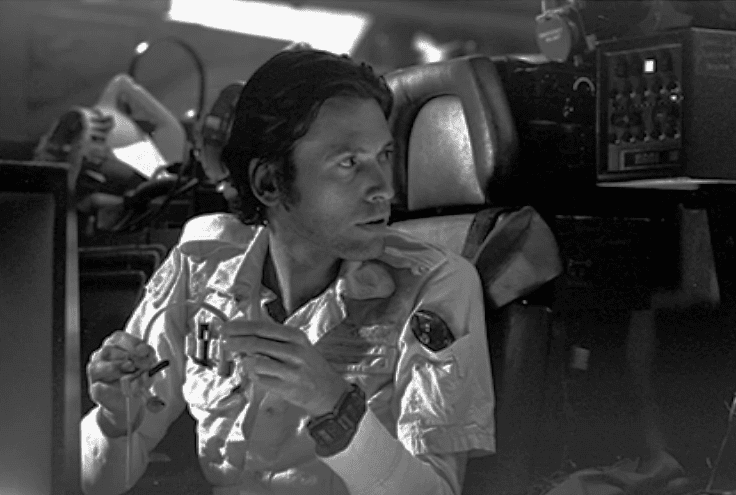
Jon Finch on the set as Kane
7. Studios weren’t keen on the script until another landmark science fiction movie was released
Writers Dan O’Bannon and Ronald Shusett had a first draft of a script and circulated it round studios, but nobody wanted to make it. Even Fox passed on it at first, but then, two things happened which changed the fortunes of Alien.
Firstly, Walter Hill – who had some credibility having written and directed several small, successful movies like The Getaway (1972) and Hard Times (1975) – picked up the script and wanted to produce it. Then, secondly, in May 1977, Star Wars was released. A phenomenon that was an unprecedented box office smash, Star Wars changed Hollywood and, suddenly, science fiction movies were red hot. Fox had produced Star Wars so went back to Alien and greenlit it immediately.
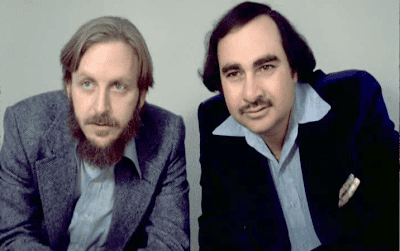
Alien screenwriters Dan O’Bannon (L) and Ronald Shusett (R)
8. Ridley Scott wasn’t the studio’s first choice to direct
Walter Hill – the producer who picked up the script – was a successful filmmaker, having directed The Driver (1978) and recently finished filming on The Warriors (1979). Hill, though, said he didn’t want to direct, and Fox went through a lot of other candidates before they got to Ridley scott.
Firstly, Fox asked Robert Altman (MASH, 1970) if he’d be interested, but he said no. Peter Yates (Bullitt, 1968) and Jack Clayton (The Great Gatsby, 1974) were considered and Robert Aldrich (Whatever Happened To Baby Jane, 1962) came very close to being hired. Aldrich talked himself out of the running when he met with Alien producers Hill and David Giler and, on being asked what his plans were for the facehugger, said: “we’ll just put some tubes on the guy’s face. Nobody’s going to remember it anyway.”
Finally, having been impressed by The Duellists, Ridley Scott’s debut feature in 1977, the producers spoke to him. Like a lot of other filmmakers at the time, Scott had seen Star Wars and been blown away by it, and had some ideas on how he’d do a science fiction movie of his own. So, when Fox approached him, he accepted immediately.
The climactic duel from Ridley Scott’s first film, The Duellists
9. Ridley Scott employed some unusual techniques when working with the cast
In order to create the atmosphere of tension and paranoia he wanted on the film, Scott used a few tricks on the set:
- To heighten the sense of claustrophobia for the cast, Scott had the walls of the sets pushed slightly closer together every day, but didn’t tell the actors he was doing it.
- He wrote full backstories for each character and gave them to the actors before shooting.
- And, to try and create more natural tension between the characters, he asked Yaphet Kotto and Ian Holm to both antagonise Sigourney Weaver on the set. When they shot the scene between Ripley, Parker and Lambert where they hatch a plan, between every take, Yaphet Kotto would say to Weaver, “come on, sister, you gotta gimme more than that,” until eventually she delivered the line we see in the film.
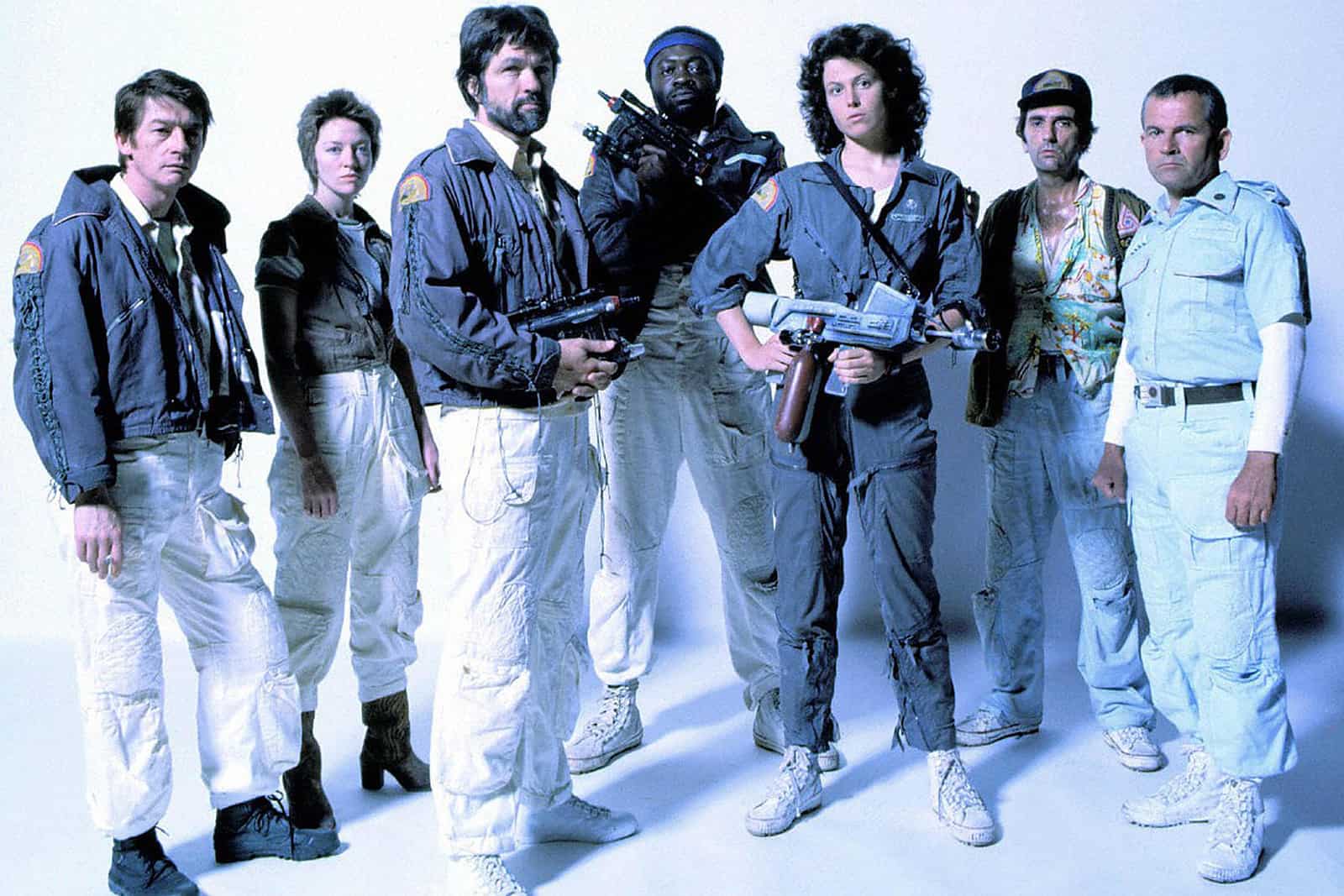
The cast of Alien
10. Scott took influence from other iconic movies
Ridley Scott cited three other movies as being big influences on him when he made Alien:
- Star Wars influenced the futuristic-yet-grounded costume and spaceship design of Alien.
- The visuals from 2001: A Space Odyssey (1968) inspired the look of Alien, and HAL-9000 – the murderous artificial intelligence in 2001 – influenced Mother, the Nostromo’s supercomputer.
- The graphic violence and unbearable tension from Tobe Hooper’s The Texas Chain Saw Massacre (1974) was a model for similar moments in Alien.
11. The Alien storyboards were superb
Ridley Scott also played a part in getting the budget increased once he came on board to direct. Whilst he was waiting for the initial $4.2m budget to be greenlit by Fox, Scott storyboarded the entire movie to get a head start. And, when Fox saw those storyboards, they were so impressed that they doubled the budget to $8.4m.
However, even though they doubled the budget, the production ended up being so big that they ran out of money mid-shoot and Scott requested another $2.6m – so the film came in at $11m in total.
At the point the production ran out of cash, there was a meeting between Scott and the heads at Fox and some of the execs said they wanted to pull the plug completely. This sent Scott into a rage and he thumped the table so hard that Scott broke his finger sideways. The secretary gave him a glass of ice and Scott just stuck his finger in the glass and carried on ranting. In the end, he got his $2.6m.
The Alien storyboards by Ridley Scott
12. The film changed Sigourney Weaver’s life
Sigourney Weaver plays the main character of Ripley, and Weaver was completely unknown at the time. Before she was considered, some other names were up for the part. Veronica Cartwright auditioned to play Ripley. Fox loved her, and Scott did too, but not for Ripley, so cast her as Lambert. Genevieive Bujold and Katharine Ross were also considered. Helen Mirren and Meryl Streep auditioned too and, according to Ridley Scott, it was actually Warren Beatty who recommended Weaver after he saw her in a Broadway play.
Scott later said, “Meryl will be a great actress, but Sigourney is Ripley.”
13. Sigourney Weaver impressed at her first audition
One of the Alien producers, Gordon Caroll, tells a story about Weaver’s audition. He said:
“We were auditioning at the Regency, but Sigourney went to the wrong hotel, so was late. Her agent rang us and begged us to wait for her. 30 minutes later we heard outside footsteps of somebody sprinting towards the door, then slowing down, then silence as she composed herself outside. There was a knock at the door, I went to open it and, right before me, Ripley was standing there.”
Scott wanted to get a female perspective on the character so had 12 women secretaries from Fox watch Sigourney Weaver’s screen test as Ripley. He said that an argument broke out over whether she was more like Jane Fonda or Faye Dunaway, and he knew he had his leading lady.
14. Scott had to think on his feet to keep the studio happy
One of the most tense scenes in Alien is the first time we see the creature strike. Engineer Brett (played by Harry Dean Stanton) chases the ship’s cat, Jonesy, into the engineering section, and is taken by the monster. A fantastic scene, but it caused some contention between Scott and the producers – namely around the dripping water that falls from the roof of the engineering section. Scott knew he wanted some sombre, ominous sound design so came up with the idea of water dripping from the ceiling, but the producers said, “why is there dripping water in a spaceship?” and Scott just said, “er, condensation” and they went along with it.
The alien takes Brett
15. Tom Skerritt wasn’t first choice to play Captain Dallas
Tom Skerritt is memorable as the brave Captain Dallas, who comes a cropper when he hunts the alien through the bowels of the Nostromo, but Skerritt wasn’t the first person up for the role.
Harrison Ford turned the role down as, having just played Han Solo in Star Wars, he was concerned about becoming too synonymous with science fiction movies. The producers also spoke to Tommy Lee Jones but passed after Jones told them he’d be in the film, but wanted to play the alien.
Skerritt wasn’t keen either, at first. When the studio first approached him, he said no because he thought the script they had at the time was rubbish and, as the budget was only $2m, he thought it would be a schlocky B-movie. Skerritt changed his mind when Ridley Scott was hired to direct because Skerritt had seen Scott’s debut, The Duellists, and he said: “That movie was like a painting and I thought ‘if anybody can make this work, it’s this guy’”.
Skerritt got some percentage points of the movie’s profits too, so worked out pretty well for him.
Captain Dallas meets his fate
16. Ash was played by two actors
A memorable scene in the film is the moment that duplicitous android Ash (played by Ian Holm) tries to kill Ripley by pushing a rolled-up magazine down her throat. Ripley is saved when Parker bursts in and takes Ash’s head off with a fire extinguisher and, when that happens, Ash’s robotic body flails around uncontrollably. This was achieved by placing a 3’6” actor inside an Ash model suit. In a later Interview, Ridley Scott said, “Look at the arms! You can tell.”
Also, the innards of Ash were made up of a combination of spaghetti, milk, meat, and onion rings.
Ash attacks Ripley
17. The film went through a few different titles
You can’t imagine the film being called anything other than Alien now, but that was actually not the original title. Dan O’Bannon’s first draft was called Memory. Another working title was They Bite, and O’Bannon then changed it to Star Beast.
O’Bannon and co-writer Ronald Shusett were never keen on Star Beast as a title and, after reading through the script, they realised how many times the word ‘Alien’ was mentioned, and changed it to that.
18. There were some major differences between the original script and finished film
Dan O’Bannon and Ronald Shusett are the credited writers on Alien, but the producers – David Giler and Walter Hill – were screenwriters themselves, and made some changes to the first drafts.
The first thing they changed was the character names. Originally, the crew were called Standard, Roby, Broussard, Melkonis, Hunter, and Faust. Giler and Hill changed the names to what we see in the film.
The biggest change Giler and Hill made was the introduction of Ash as a character. He wasn’t in O’Bannon and Shusett’s script so he, and whole subplot around Ash conspiring against the crew, was added by the two producers.
19. O’Bannon and Shusett took inspiration from the insect world in creating their monster
When they started writing the script, O’Bannon and Shusett had the idea of an alien aboard a spaceship terrorising the crew, but didn’t know how to get the beast on the ship in the first place. They’d reached an impasse until, one night, Shusett woke in a cold sweat. He called O’Bannon immediately and said, “I’ve got it. The alien jumps on one of their faces and fucks them!” Rather than thinking Shusett was a madman, O’Bannon said to him, “my god, that’s it, we’ve got the movie.”
The two writers carried out research into insects and took inspiration from braconid wasps, which lay their eggs inside caterpillars. And, slowly, the idea developed into the facehugger.
20. O’Bannon and Shusett were sued by another writer for copyright infringement
After Alien was released, Fox were served a lawsuit by a writer called A.E. van Vogt. He’d written a science fiction short story in 1939 called Discord In Scarlet and, in this story, a lone survivor of an alien race infiltrates a spaceship and starts implanting eggs into their bellys. The dispute was settled out of court.
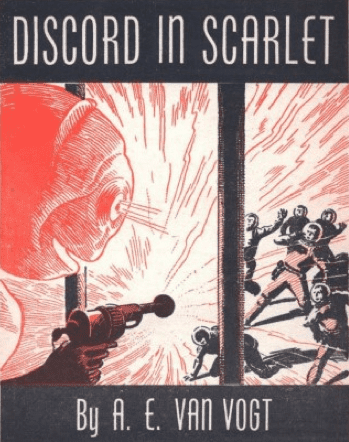
A.E. van Vogt’s Discord In Scarlet from 1939
21. Ridley Scott and Jerry Goldsmith didn’t get along great
The famously ominous score to Alien was composed by the acclaimed Jerry Goldsmith. He wasn’t Ridley Scot’s first choice as composer, however. Scott actually wanted Alien to be scored by a Japanese composer called Isao Tomita, who was a pioneer of electronic space music, but Fox wanted a more established and recognisable name. The studio pushed for John Williams, but Scott agreed to go with Jerry Goldsmith.
It worked out very well in terms of the quality of the music, but Scott and Goldsmith were at odds throughout the production. Scott thought that Goldsmith’s first composition was too extravagant, and wanted something very minimalist. Goldsmith tried again, but Scott actually ended up rejecting some of his work and using Howard Hanson’s symphony no2 for the finale, which annoyed Goldsmith.
Jerry Goldsmith said: “Ridley is a brilliant filmmaker but he wasn’t as articulate then about what the music should do. We could’ve got on so well, but we didn’t. He didn’t like the main theme I wrote so I rewrote it as the obvious thing: weird and strange. And everybody loved it.”
Jerry Goldsmith’s title theme to Alien
22. Ridley Scott shot a lot of the film himself
Despite the grand-looking scale of Alien, much of the set was small and confined, meaning much of the movie had to be shot handheld. The Art Director on Alien was called Roger Christian and he said, “Eighty percent of Alien was shot on Ridley’s shoulder,” meaning Scott did a lot of the camera work himself.
Scott had very specific ideas around how he wanted to light the film too, but he and Director of Photography Derek Vanlint had some major problems achieving Scott’s vision. Most of the sets were corridors and low-ceiling rooms, so lighting had to be set up through grills, or by hiding lights, or having actual lamps in the shot.
The egg chamber sequence is one that stands out for its extraordinary lighting, and there’s an interesting story on how that came to be. When they were filming this sequence, world-famous rock band The Who were testing out lasers for their stage show next door. Scott asked the band’s singer, Roger Daltrey, if they could borrow the lights, and those lights provided that eerie blue effect we see in the sequence.
23. The alien itself was designed by a surrealist Swiss artist
It’s fairly common knowledge nowadays that the alien was created by Swiss artist H.R. Giger but, at the time of the film, he wasn’t so well known. Dan O’Bannon had worked as a writer on Alejandro Jodorovsky’s famously ill-fated Dune project, and H.R. Giger worked on it as part of the artworking team. O’Bannon was blown away by the design work on Dune – especially Giger’s work that combines humans and machinery, often in a sexualised fashion – and, when the production of Dune was shut down, he basically took the creative team with him to make Alien, including H.R. Giger. When Ridley Scott came in as Alien director, he loved Giger’s art book Necronomicon, so kept him on.
Giger’s original designs for the facehuggers were green-skinned. This was changed when Dan O’Bannon saw the unpainted facehugger model on the set and loved its white human flesh-type colour, and asked for it to stay like that.
The full-grown aliens were originally going to be transparent and their heads full of living maggots. This was too big a technical challenge to pull off, so it was changed. And, originally, the alien Giger designed had eyes. He asked himself for the eyes to be removed when the effects team started building it.
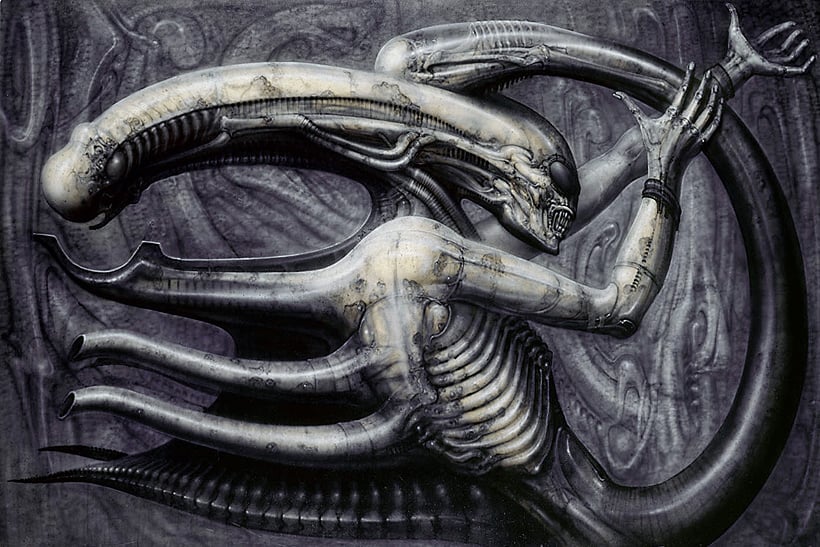
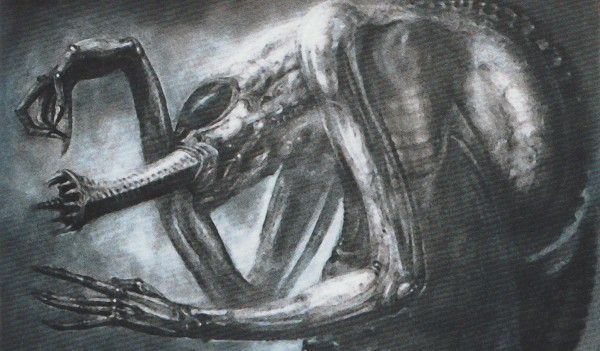
H.R. Giger’s first designs of the alien creature
24. Giger’s designs were detained at an airport
Giger’s unique illustrations had a problem getting through US customs. When he shipped over his first designs for the facehugger, customs officials were so alarmed by what they saw that they detained them. Dan O’Bannon had to go to LAX to convince them they were for a horror movie. The official O’Bannon met described the images as, “repulsive abortions.”
25. There was some fantastic effects production on the film
Ridley Scott firstly wanted to use animatronics to create and control the alien to avoid it simply being a man in a rubber suit, but special effects at the time weren’t advanced enough to do that so it a combination of rubber suit and a head controlled by pupeteers.
- There was a team of puppeteers who were able to control the head to move in any direction, and they could also control the alien’s lips, its jaw, and its inner mouth that shoots out. The puppet head had over 900 working parts to it.
- The front part of the alien’s head was made from a cast of a real human skull.
- The slime that drips from the alien’s mouth was K-Y jelly.
- And shredded condoms were used to create the tendons on the alien jaws.
And the facehugger that Ash autopsies back aboard the Nostromo later was a model made using shellfish, oysters and sheeps kidney for the internal organs. Similarly, the inside of the alien egg we see, when it attacks Kane, was made with cattle hearts and stomachs, and a sheeps intestine.
26. As well as the model, the alien was played by a man in a suit
On finding out the special effects technologies of the late ’70s weren’t able to create a fully mobile creature, Ridley Scott realiseed he would need an actor to portray specific movements of the alien. A casting call went out, and there were a couple of actors up for the role. One of them was Peter Mayhew, who played Chewbacca in Star Wars, but the part eventually went to a graphic artist called Bolaji Badejo. He was 7ft 1 inch tall and was discovered in a London pub by one of the casting directors. Scott sent him for Tai Chi and mime classes to learn how to slow down his movements.
Scott was very keeen to avoid the ‘guy in a rubber suit’ look, so had to shoot the alien in very specific ways to make sure it wasn’t too obvious. The alien only has 4 minutes of screen time and, when it is on screen, the shots of it are very short. Also, we don’t see it until 1 hour into the movie and Scott deliberately never shot the alien facing the camera directly because he thought that might make it look more humanoid.
Filming the final sequence aboard the escape shuttle where the alien hides in a bulkhead was tricky because Bolaji Badejo was so tall. To get around the issue, the set was constructed around Badejo so he could fit into the set and move out easily. However, he still found it difficult and he ripped the suit a few times and, at one point, he stood up in front of Ripley, and the tail fell off.
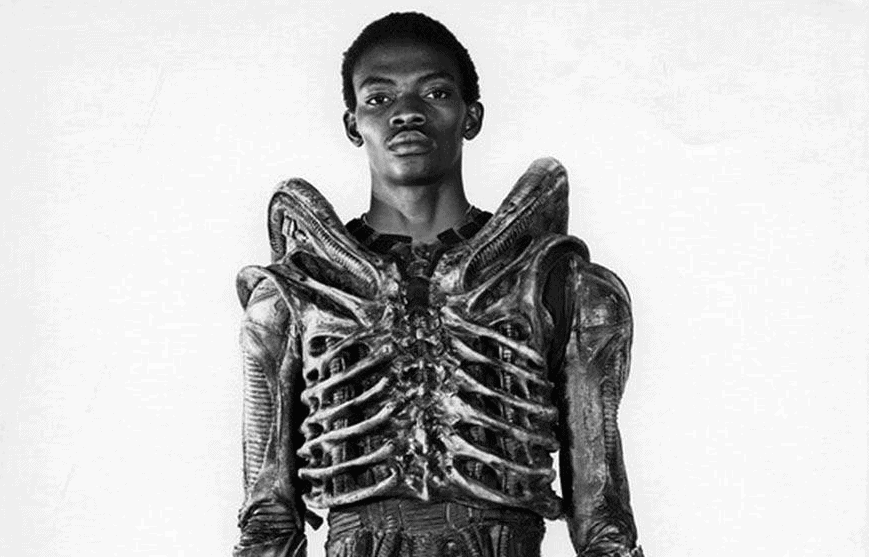
Bolaji Badejo in the alien costume
27. The death of Parker made use of some bizarre practical effects
One of the tensest parts of the movie is when, with only Ripley, Lambert and Parker remaining, the crew decide to leave the ship in an escape shuttle and set the Nostromo to self-destruct. Parker and Lambert head to supplies to pick up some oxygen tanks, and meet their grisly fates when the alien appears.
The moment Parker is killed, there’s a shot where the alien’s mouth punches through Parker’s skull. To achieve this effect, a fibreglass replica was made of actor Yaphet Kotto’s head, and filled with pigs brains. The model’s forehead was made of wax, so the alien’s teeth could break through it easily.
Parker and Lambert are killed by the alien
28. Lambert’s death was originally different
In the movie, Lambert dies when the alien appears before her and, petrified, she freezes to the spot. It’s a memorable moment, but was originally differnet in the script. In the original version, when Lambert freezes, Parker tries to shoot the alien but misses and blows a hole in the hull of the ship, which creates a huge vacuum out into space. The alien holds Lambert over the hole and she slowly gets sucked through it.
They actually used this scene that in Alien: Resurrection (1997) when, in the climax, the alien baby is sucked out into space a tiny hole in the hull of the ship.
The scene in Alien: Resurrection that was originally written for Alien
29. In a deleted scene, we find out what happened to Dallas
In the film, after Dallas is taken in the air ducts, we never hear from him again. However, a scene was filmed where we find out what happened to him. In the climax of the movie when Ripley is running through the bowels of the ship heading for the shuttle, she comes across a cocooned Brett and Dallas. Brett is dead, and Dallas is morphing into an egg. He begs Ripley to kill him so she does with her flamethrower. The scene is in the director’s cut but was omitted from the theatrical cut.
The deleted scene with Brett and Dallas
30. Ridley Scott wanted the movie to end very differently
It’s difficult to imagine Alien ending any way except with Ripley blowing the creature out of the airlock but Ridley Scott originally wanted a very different – and bizarre – ending to his movie. In Scott’s original version, Ripley harpoons the alien (as we see in the film) but, instead of it firing the alien out into space, it makes no difference: the alien runs towards Ripley, slams its hand through her mask, and rips her head off! It would then sit in her chair, start talking in Captain Dallas’ voice, and say, “I’m signing off, hopefully the network will pick me up.”
Unsurprisingly, Fox were not keen on such a downbeat ending. Hearing what Scott had planned, a studio executive arrived on set and told Scott he’d be fired on the spot unless he filmed an ending where the alien dies. And Scott himself later admitted that how the film actually ends is better.
Also, a final Easter Egg. If you watch the end credits until the very end, the last thing you hear, after the final credits have rolled, is the sound of an alien egg opening.
The famous climax to Alien
So, there you have it – the making of a science fiction and horror classic by way of 30 mid-blowing and interesting facts. Please share on your social platforms, and listen to our podcast on Alien, here.


